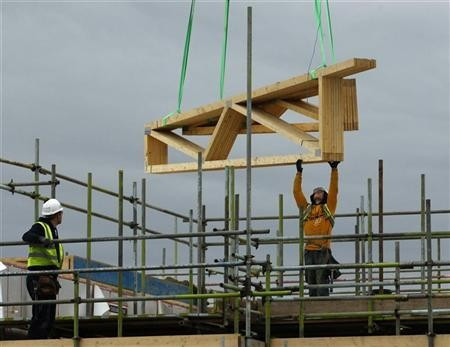Homebuilding Lifts UK Construction Sector to Highest Output Growth Since June 2010

Output from the UK's long-suffering construction sector leapt in July to its highest level in over three years.
It follows a spike in output from manufacturing firms during July - which hit a 28 month high - and is continuing the economy's gathering momentum as 2013 progresses, after UK growth accelerated to 0.6% in the second quarter.
The Markit/CIPS Purchasing Managers Index (PMI) for the construction sector hit 57.0 in July, up sharply from June's 51.0 and the highest reading since June 2010. The bounce came off the back of increasing residential building activity, which also saw output growth jump to its steepest since June 2010.
"July's survey highlights a new wave of optimism across the UK construction sector, with companies reporting a pace of expansion in excess of anything seen over the past three years," said Tim Moore, senior economist at Markit and author of the Markit/CIPS Construction PMI.
"The swing back to output growth broadened to include commercial and civil engineering activity during July, although housing construction remains the one thing crucial to the sector's strong upturn at present.
"Construction firms saw the fastest improvement in new orders for over a year, which helped kick-start job creation and input buying growth during July. A switch to sharply rising purchasing activity may have caught some suppliers by surprise, as delivery times lengthened to the greatest degree in over seven years."
Building Momentum
A painful drop in output from the construction sector at the end of 2011 dragged the British economy back into recession.
The decline among building firms, triggered by the drying up of public sector contracts under the government's austerity programme, continued until the end of 2012 and weighed heavily on GDP.
There is a housing shortage in the UK, with demand far outpacing supply. In 2012 there were just 100,000 housing starts, when estimates suggest 250,000 were needed just to keep up with current demand.
This imbalance has underpinned house prices across the country, but is most protracted in London where - despite the recent economic gloom - prices are around 9% above their pre-financial crisis peak.
Insisting it could not renege on a commitment to public sector austerity as a means of erasing the structural deficit in the Treasury's finances, the government has instead pinned its housebuilding hopes on consumer mortgage market stimulus.
It hopes that by easing the flow of mortgage credit into the economy, through its Funding for Lending and Help to Buy schemes, the rising demand will catalyse a new wave of housebuilding and go some way to addressing the dearth in supply of new affordable homes.
However, critics say this will merely create a new property bubble unless the government invests directly in building new housing as construction firms will not be able to meet the growing demand.
© Copyright IBTimes 2025. All rights reserved.






















